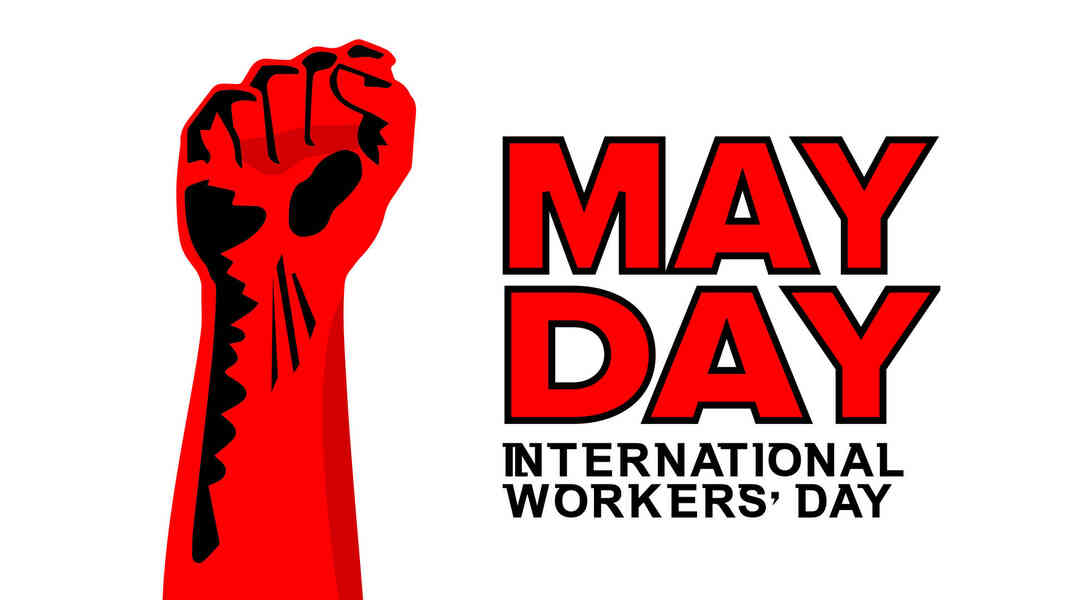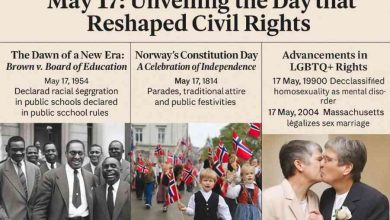May Day’s Clash: Workers’ Fight Unveiled
From blood-soaked strikes to global rallies, May 1 echoes the unyielding spirit of labor’s battle—its lessons still shaping today’s fight for fairness.

A Spark in Chicago’s Streets
On May 1, 1886, Chicago’s cobblestone streets thrummed with defiance. Over 40,000 workers—carpenters, factory hands, and seamstresses—poured into the city’s arteries, their boots pounding a rhythm of rage. They weren’t just marching; they were demanding. Eight hours. That was the cry. Not ten, not twelve, but eight hours for work, eight for rest, and eight for life. The air smelled of sweat and coal dust, and banners waved high: “Eight Hours for Work, Eight for Rest, Eight for What We Will.” This wasn’t a parade—it was a revolt against the grind of the Industrial Revolution, where men, women, and children toiled until their bodies broke.
The stakes were brutal. In 1886, the average factory worker earned $1.50 a day, often for 12-hour shifts in dangerous conditions. The U.S. Bureau of Labor Statistics later estimated that workplace accidents killed 35,000 workers annually in the 1880s, with 500,000 injured. Chicago, a hub of meatpacking and manufacturing, was a pressure cooker. Labor unions, like the Federation of Organized Trades and Labor Unions, saw May 1 as the day to strike. They chose it deliberately—a symbolic launch for a nationwide push for the eight-hour workday. By dusk, the city buzzed with hope, but tension crackled like a storm about to break.
The Haymarket Powder Keg
Three days later, on May 4, 1886, the spark ignited. At Haymarket Square, 3,000 workers gathered to protest police violence against strikers at the McCormick Reaper Works, where one worker had been killed. The crowd was diverse—German immigrants, Irish laborers, and native-born Americans, united by exhaustion and anger. As rain began to fall, anarchist leader August Spies urged calm. But calm didn’t last. A police force of 180 men marched in, demanding the crowd disperse. Then, a homemade bomb arced through the air, exploding in a flash of fire and shrapnel. Seven officers died; dozens were wounded. The police opened fire, killing at least four workers and injuring scores more. Chaos reigned as screams drowned out the rain.
The Haymarket Affair, as it became known, shocked the nation. The bomb’s thrower was never identified, but eight anarchist leaders were arrested, tried, and convicted on flimsy evidence. Seven were sentenced to death; one got 15 years. On November 11, 1887, four—Albert Parsons, August Spies, Adolph Fischer, and George Engel—were hanged. Another, Louis Lingg, died by suicide in his cell. The trial was a farce, driven by anti-immigrant and anti-labor hysteria. Historian James Green, in his book Death in the Haymarket, notes that the prosecution relied on fear, not facts, to secure convictions. The executed men became martyrs, their deaths fueling a global labor movement.

May Day Goes Global
The Haymarket Affair didn’t end in Chicago. It lit a fuse that spread across oceans. In 1889, the Second International, a coalition of socialist and labor groups, met in Paris. They declared May 1 as International Workers’ Day to honor the Haymarket martyrs and demand workers’ rights worldwide. The first May Day rallies in 1890 saw millions march—200,000 in London, 100,000 in Paris, and countless more in cities from Havana to Vienna. The day became a symbol of solidarity, with red flags and songs like The Internationale uniting workers across borders.
By the early 20th century, May Day was a global force. In 1904, the International Socialist Conference in Amsterdam called for annual May 1 demonstrations to push for the eight-hour day and world peace. The results were tangible. By 1917, Russia adopted the eight-hour workday, partly inspired by May Day’s momentum. In the U.S., the Ford Motor Company implemented a 40-hour week in 1926, a move that rippled across industries. But progress came at a cost. In 1919, May Day riots in Cleveland and New York saw police clash with marchers, leaving dozens injured. The Red Scare of the 1920s further demonized May Day, tying it to communism in the public’s mind.
The Soviet Spectacle
In the Soviet Union, May Day became a state-orchestrated spectacle. After the 1917 Bolshevik Revolution, the holiday was embraced as a celebration of the proletariat. By the 1930s, Moscow’s Red Square hosted massive parades, with tanks, missiles, and thousands of workers marching past Kremlin leaders. The Soviet government claimed May Day showcased the triumph of socialism, but it was also propaganda. Dissidents were silenced, and participation was mandatory. Historian Sheila Fitzpatrick, in Everyday Stalinism, estimates that over 1 million people attended Moscow’s May Day parade in 1935 alone, many coerced to prove loyalty.
The Soviet model spread to Eastern Bloc countries and beyond. In China, the All-China Federation of Trade Unions, founded on May 1, 1925, grew to 134 million members by 2000, making it the world’s largest trade union. But these state-controlled unions often suppressed workers’ voices rather than amplifying them. May Day’s original spirit—grassroots defiance—was co-opted by regimes that feared true labor power.

America’s Labor Dodge
In the U.S., May Day’s radical roots were buried. After Haymarket, the government and businesses pushed back hard. In 1894, President Grover Cleveland signed legislation making Labor Day, held in September, the official U.S. workers’ holiday. The move deliberately distanced the country from May Day’s socialist ties. In 1958, President Dwight D. Eisenhower went further, declaring May 1 as “Law Day” to celebrate American legal traditions—a direct counter to Workers’ Day. The U.S. Department of State archives confirm this was a Cold War tactic to undermine communism’s appeal.
Despite the suppression, American workers kept fighting. The eight-hour day became standard by the 1930s, thanks to decades of strikes and union pressure. But May Day itself faded from U.S. consciousness. Even today, it’s rarely acknowledged, unlike in 66 countries where May 1 is an official holiday. The National Museum of American History notes that May Day’s absence reflects America’s unease with its own labor history—a history of blood, sacrifice, and hard-won gains.
Modern Echoes: May Day in 2025
Fast forward to 2025, and May Day still pulses with relevance. Globally, workers use the day to protest stagnant wages, unsafe conditions, and corporate greed. In 2023, France saw over 2.3 million people march on May 1 against pension reforms, with police deploying tear gas in Paris, according to Reuters. In 2024, South African unions rallied for a minimum wage increase, citing a 27% unemployment rate, per Al Jazeera. These aren’t relics of the past—they’re today’s battles, rooted in the same demands for dignity that drove Chicago’s workers in 1886.
In the U.S., May Day has seen a quiet resurgence. The 2020s labor renaissance, sparked by post-COVID worker shortages, brought strikes and union drives. In 2022, over 4,000 Starbucks workers at 100 stores unionized, echoing Haymarket’s call for collective power, per the National Labor Relations Board. On May 1, 2023, Amazon workers in New York held May Day walkouts, demanding better pay and safety. The Economic Policy Institute reports that union membership grew by 273,000 in 2022, the largest increase in decades. May Day’s spirit—defiant, unyielding—lives in these fights.
Technology adds a new layer. Gig workers, from Uber drivers to DoorDash couriers, now rally on May 1, protesting algorithms that slash their earnings. A 2024 study by UC Berkeley found that gig workers earn a median of $9.74 per hour after expenses, far below minimum wage in many states. Social media amplifies their voice, with #MayDay trending globally each year, as seen in X posts from 2023 and 2024. The tools have changed, but the struggle hasn’t.
Lessons from May 1
Solidarity Wins Battles: The eight-hour day, now a global standard, came from workers uniting across race, language, and trade. Today’s labor movements—whether at Amazon or in Paris—thrive when they bridge divides. Data backs this: The International Labour Organization says unionized workers earn 10-20% more than non-unionized ones.
Sacrifices Shape Progress: Haymarket’s martyrs paid with their lives, but their deaths galvanized a century of labor reform. Modern workers owe their weekends and safety laws to such sacrifices. The U.S. Occupational Safety and Health Administration credits union advocacy for a 60% drop in workplace deaths since 1970.
Power Fears the Crowd: Governments and corporations have long suppressed May Day, from Chicago’s executions to Soviet parades. Yet workers persist. In 2024, 1.5 million marched in Istanbul despite bans, per BBC News. Collective action remains a threat to unchecked power.
The Fight Evolves: May Day’s demands have grown—fair wages, yes, but also climate justice and gig worker rights. The World Bank notes that 1.6 billion workers globally face precarious employment in 2025. May 1 reminds us to adapt without losing focus.
A Day That Refuses to Fade
May 1 is no mere date. It’s a pulse, beating through centuries of struggle. From Chicago’s bloodied streets to 2025’s picket lines, it carries the weight of workers who refused to bend. The Haymarket Affair, with its 11 deaths and global ripple, wasn’t just a riot—it was a declaration. Today, as gig workers tweet their grievances and unions rally in city squares, May Day’s fire still burns. It’s a reminder that progress isn’t given; it’s taken. Stay sharp with Ongoing Now 24.





